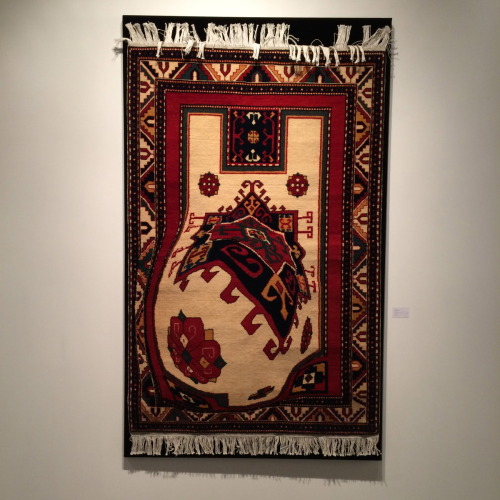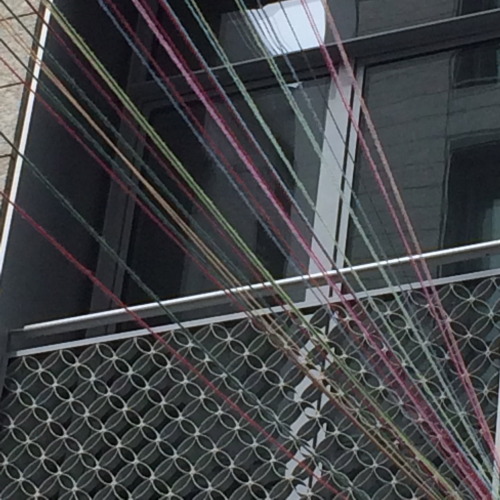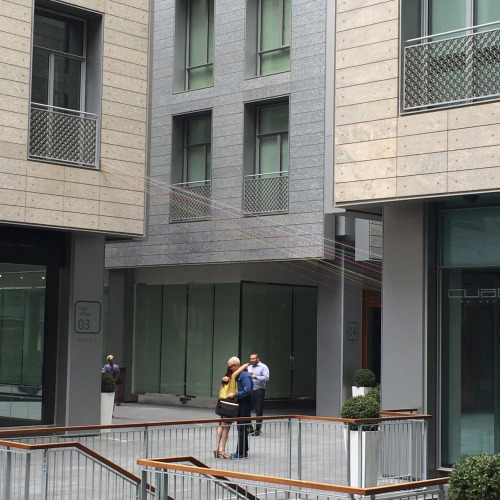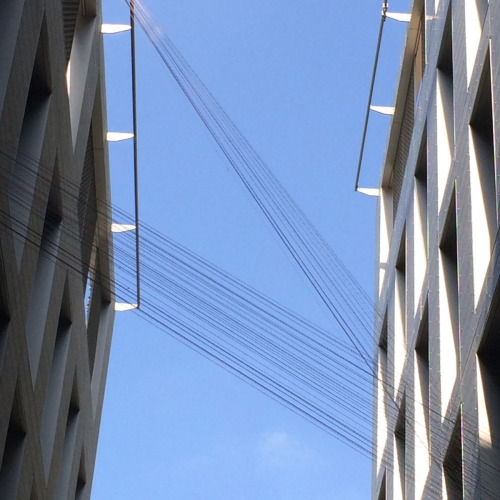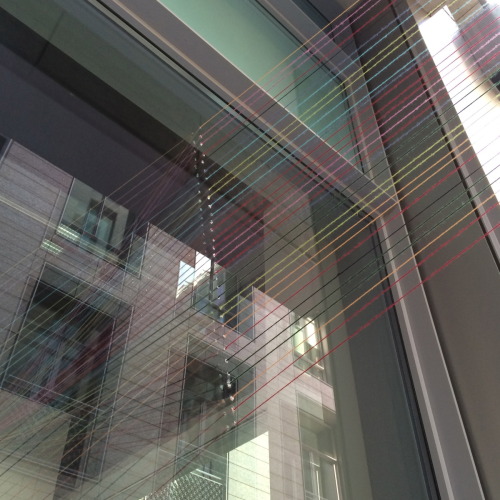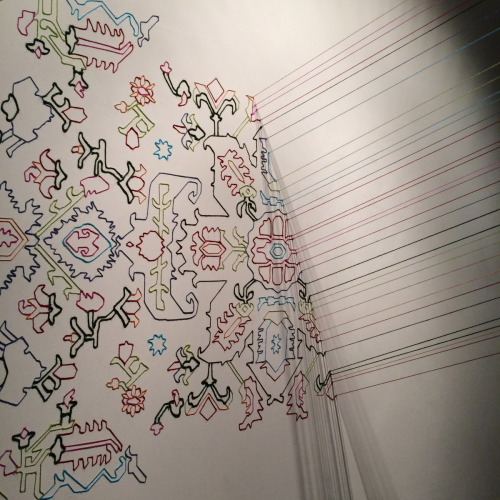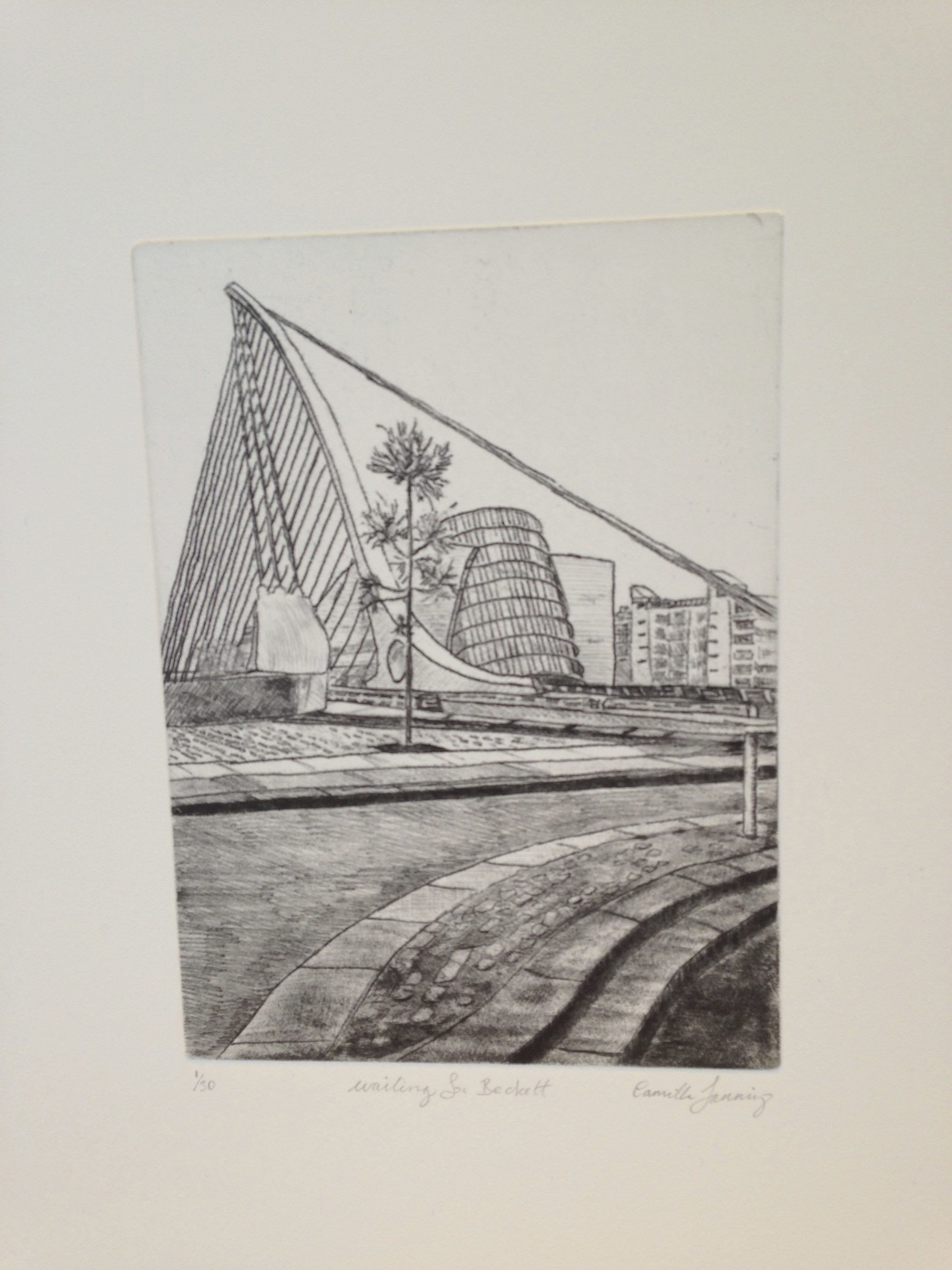Faig Ahmed: Weaving a Wonderful Tale
 Thursday, March 20, 2014 at 4:58PM
Thursday, March 20, 2014 at 4:58PM Art Week in Dubai is in full swing. Gallery openings, design days, art fairs, art nights, workshops and enchanting exhibitions and installations have captured viewers and art lovers from all over the world.
Many have immersed themselves in the experience and through this have formed wonderful new relationships with friends and artists. I personally have met people from all over the world that I had only known before through social media platforms such as Twitter and Instagram. Together we have attended events and shared stories, thereby getting to know a little bit more about each other and about other cultures.
The stories we have shared with each other have further helped to weave the wonderful tale of interconnection and shared humanity that is slowly making itself heard today. They have helped us to let go of stereotypes and question existing boundaries.
One installation during Art Week captured my attention the minute I heard about it via social media. @cuadroart, the Instagram account for the Cuado Art Gallery, posted a picture with the caption,
“Faig Ahmed’s yarn threads have started to stretch out of Cuadro and into the balconies of the neighboring buildings in the DIFC Gate Village”
Faig Ahmed is from Baku, Azerbaijan. Currently he is exploring carpets, weaving digital patterns with the conventional recurring patterns to create bold optical illusions. Faig states that “Tradition is the main factor creating the society as a self regulated system. Changes in the non-written rule happen under influence of global modern culture.”
Faig works are currently “an instantaneous expression” and he believes that in today’s world, “ideas that have been formed for ages are being changed in moments”.
One online article by a blogger called Will had this to say about Faig Ahmed’s work:
“Carpets are often regarded as an indestructible icon of the East, and a deeply respected item in many households used for visual and decorative means. Faig’s work alters these standard stereotypes and creates new boundaries with a fresh outcome.”
In his current installation, Faig takes this two-dimensional craft and by stretching elements of his work into space, takes it into a third dimension. As I read all of this, the tale became more captivating, and like a reader caught up in a gripping storyline, I was being drawn into this wonderful web.
The DIFC is one of my favorite places to photograph in Dubai. That the installation involved buildings was a bonus.
I love taking photographs of buildings and presenting them in such a way that the viewer is encouraged to take on a new perspective. We are so caught up in the beliefs and traditions of our respective cultures, that it is not always easy to see things from a different perspective. Through my mobile photography I attempt to introduce this concept visually, both by not using a traditional camera and through my images.
The evolving installation that met me in the Gate Village did not disappoint me.
As I began to capture my impressions of the installation as it unfolded, I realized the story being woven was almost interactive, with personal impressions being woven into the threads by its viewers.
The installation has a dynamic movement and it excited me to see the buildings being joined in a way that made them look as if they were reaching out to each other, sharing stories and sharing the space they were in more intimately than before. This so tied in with my recent blog in which I received a tweet from a tower.
My love of architecture and my passion for promoting interconnection through here2here were being represented visually in a form I had not imagined before.
When a couple met and hugged underneath Faig’s installation, another chapter in the tale was complete.
As the story of the installation unfolded on Instagram it was gaining yet another dimension, this time in cyberspace.
There was mention of “His palette of colorful yarns” and the viewer was informed that “Scaffolding keeps getting higher and higher as he works yarn from the gallery walls out the window and all the way up to the roof.”
While preparing this piece I came across an ancient metaphor:
“thought is a thread, and the raconteur is a spinner of yarns - but the true storyteller, the poet, is a weaver.”
A weaver of a wonderful tale had arrived in my world and I determined to meet him at Art Nights. Patiently waiting my turn I noticed his open engagement with others. I was able to show him some of the photos I had taken and see his delight when he saw the couple hugging under his work.
As mentioned earlier, I was present with Igers from all over the world at Art Nights, our online connections having overflowed into physical space, just as Faig’s yarns had moved from inside the gallery to the neighbouring rooftops outside.
Antoine de Saint-Exupery spoke about “a mesh into which relationships are tied” and this was probably what Tim Berner-Lee had in mind when he created the term “World Wide Web” in 1989.
As we make our way through cyberspace, let us remember the importance of relationships.
The complex membrane of information, called the noosphere by Pierre Teilhard de Chardin, that is currently enveloping the globe is fueled by human consciousness. Each tweet we send, each instagram pic we post or every facebook update we make, is a thread that can add to the beauty of the unfolding carpet of life. As we encounter others online in here2here space, let us treat them with respect as we listen deeply to what they share. As we collaborate with others, let us remember that we have more similarities than differences.
We are threads in a wonderful tale, but we are also the weavers.
